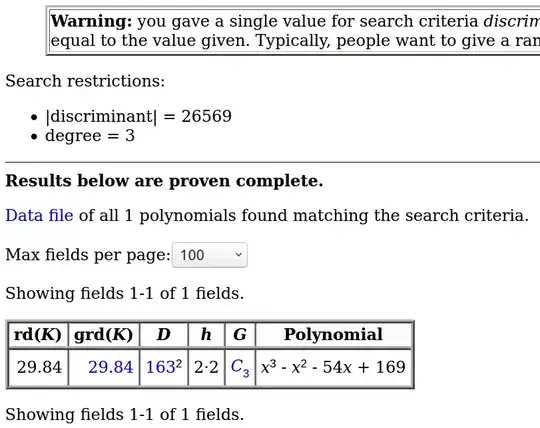I've asked similar questions before. Currently I would like to have the justification filled in for this: we wish to find the primes integrally represented by the norm form of an abelian totally real cubic field. Which is to say, given a monic irreducible polynomial $x^3 + a x^2 + b x + c$ with discriminant an integer square, I believe that the represented primes are defined entirely by ordinary congruences.
I think this is the easy case.
The more difficult cases of non-square discriminant are discussed in, for instance, Williams
Primes represented by $x^3-21xy^2+35y^3$.
That would be the question, is it really really true that congruences suffice to determine the represented primes, what sort of arguments are involved, and where might one find full detail? Also, is there a method similar to Gauss reduction that can construct a representation of a given prime? I will play with that for some easy examples, see what might work. Relevant are $x^3 - 3 x + 1$ and $x^3 + x^2 - 2x - 1$ of discriminants $3^4$ and $7^2.$ ADDED: the other very strong property I expect is that, for any prime $q$ that is not represented and does not ramify, the represented number can only be divisible by $q$ when every variable in the norm form is divisible by $q,$ so that the number is divisible by $q^3$
For one of the monic polynomials, take the companion matrix, call it $M,$ after which the norm form is just $$ f(x,y,z) = \det \left( xI + y M + z M^2 \right) $$ and see what numbers happen with integer $x,y,z.$ For the first, I get $3$ and all primes $p \equiv \pm 1 \pmod 9$ For the second, I get $7$ and all primes $p \equiv \pm 1 \pmod 7.$
The two examples from the field database represent $1, 8, 55, 62 \pmod {63} $ Taken as polynomials, the second discriminant is $4$ times the first.
The counterexample of Pisco is cubic, discriminant $163^2$ while the Hilbert class field has degree 12 and is not abelian. All words to look up, I have Cox

